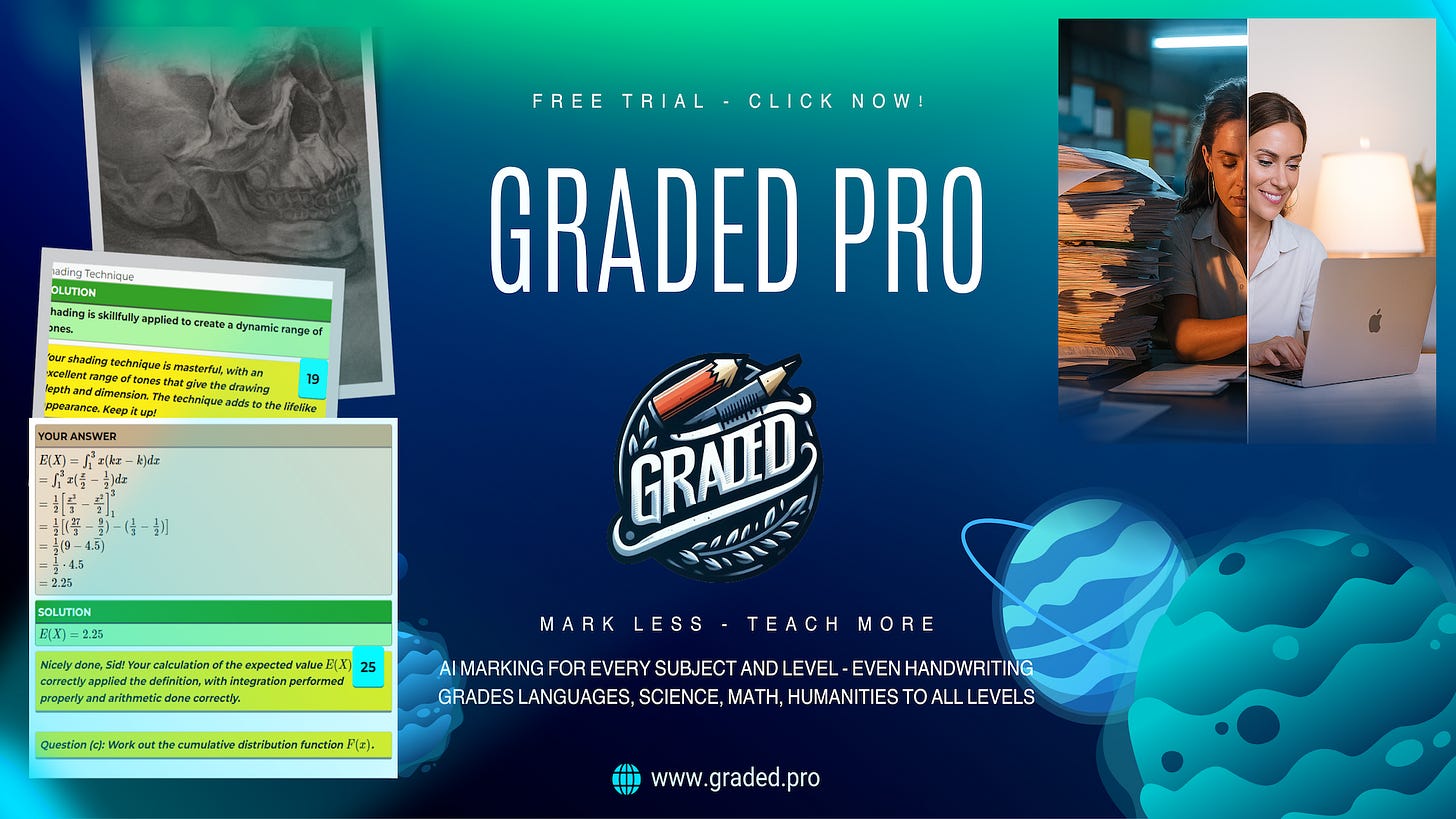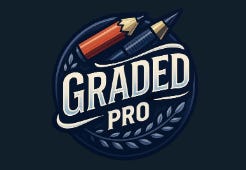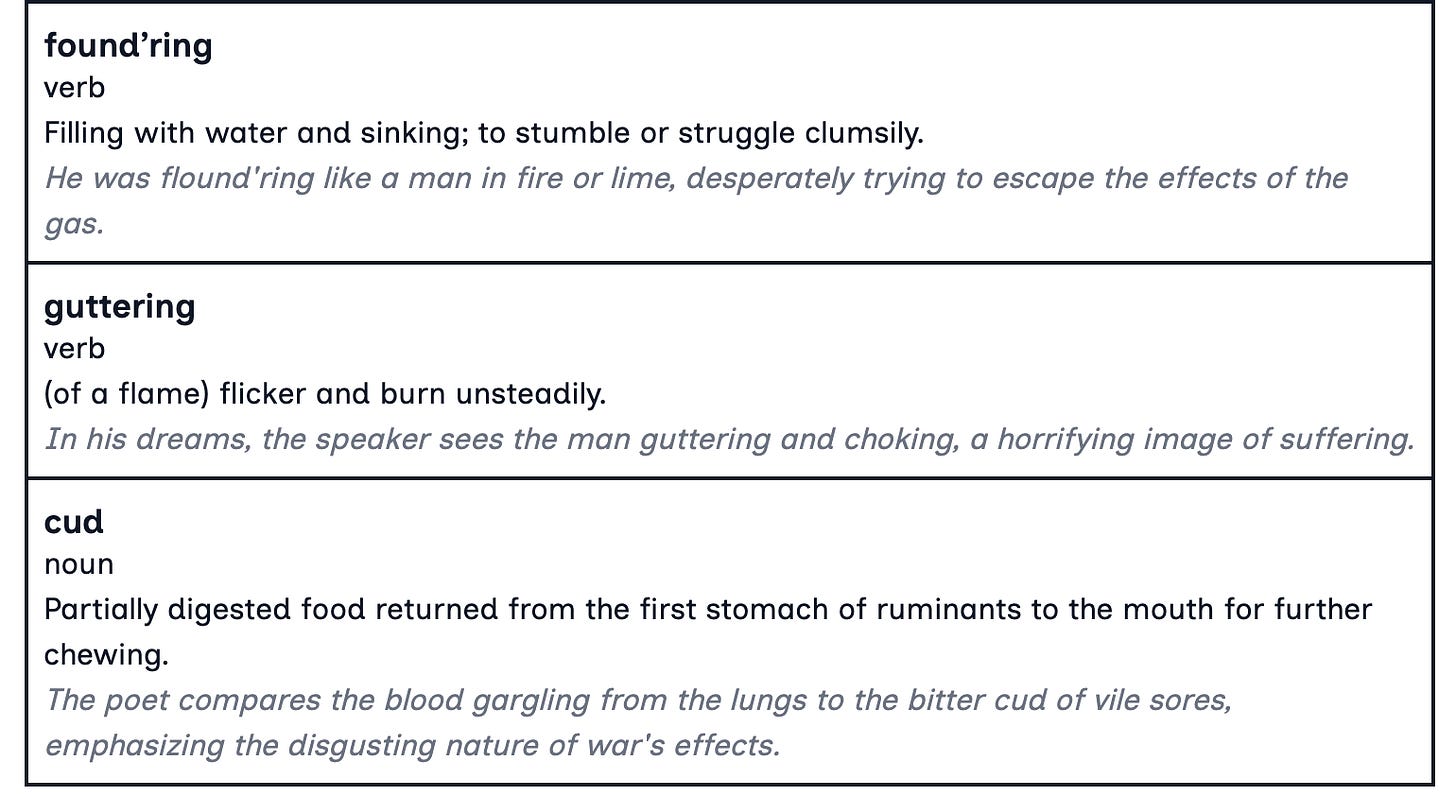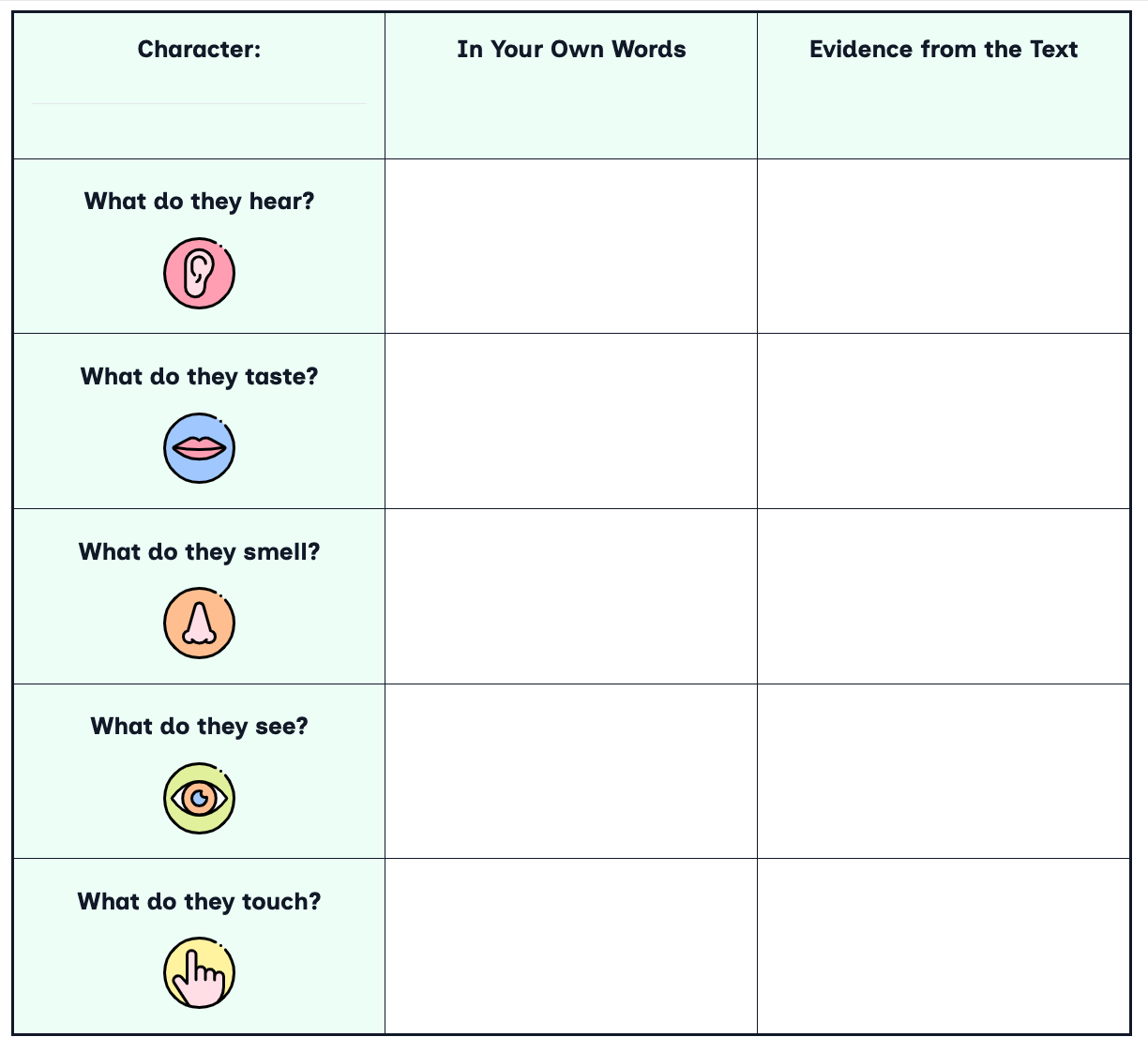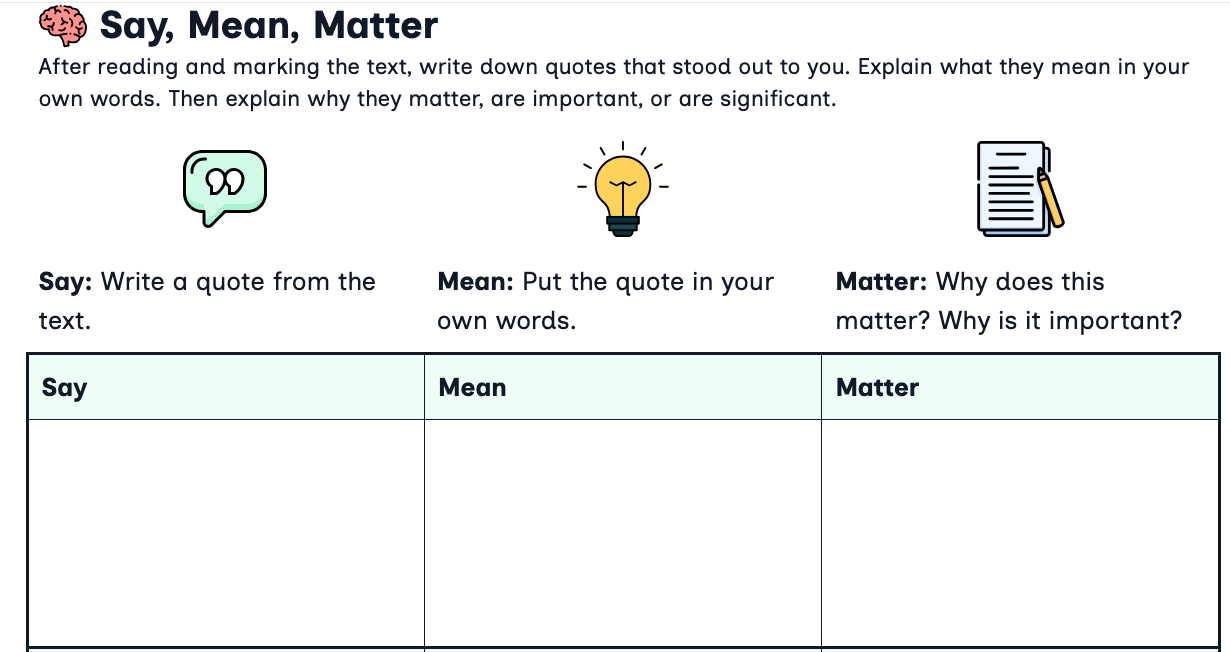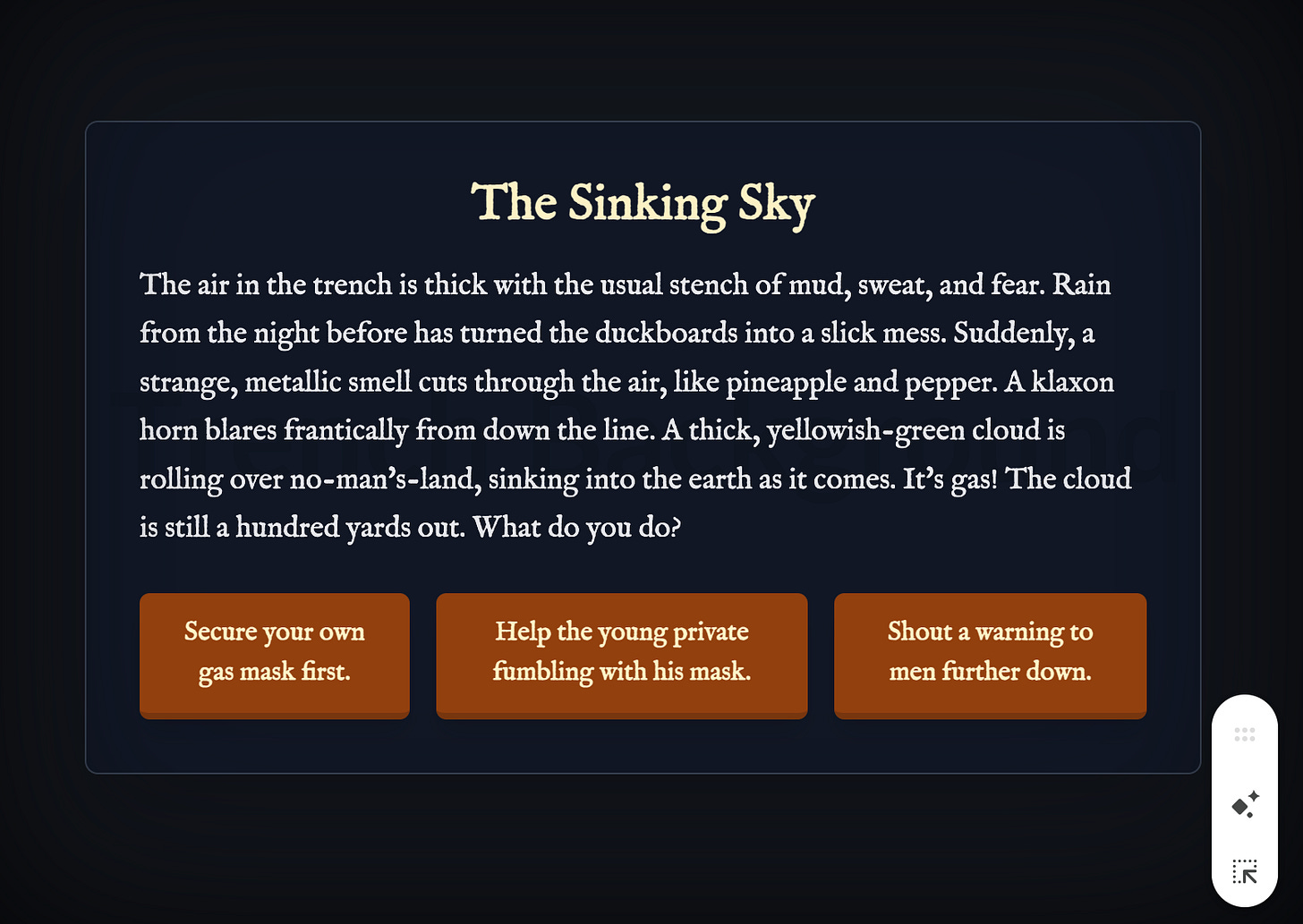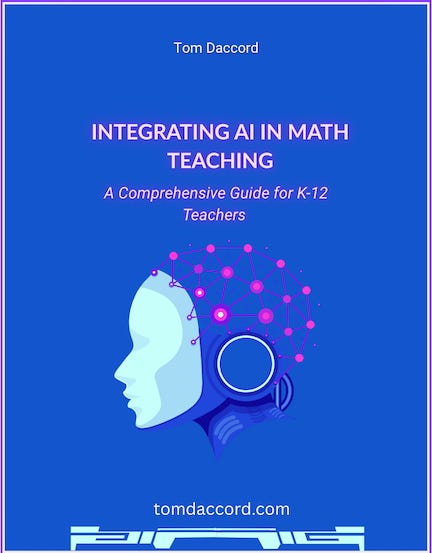Using Diffit, Google Arts & Culture, and Gemini Canvas to teach Dulce et Decorum Est
One of my biggest challenges as a classroom teacher was helping students unlock the meaning of historically and culturally significant texts. These are typically speeches, documents, and poems that carry the weight of history, but often fall flat in students’ hands. The culprits were easy enough to identify — archaic vocabulary, legalistic prose, or undetected irony — but the remedies were not always at my fingertips. I often struggled to balance two competing goals: remaining faithful to the original text while ensuring students didn’t drown in its difficulty.
Fortunately, teachers today can turn to AI-powered tools to maintain that balance. In this post, I’ll show how Diffit, Google Arts & Culture, and Gemini Canvas can work together to scaffold comprehension, contextualize meaning, and heighten immersion. I’ll focus on a powerful text that belongs in both ELA and history classrooms, Wilfred Owen’s “Dulce et Decorum Est.” The goal here is to use Diffit, Google Arts & Culture, and Gemini Canvas in tandem to lead students from analysis to interpretation to immersion without sacrificing the richness of the original works.
Dulce et Decorum Est
“Dulce et Decorum Est" is a poem written by Wilfred Owen during World War I known for its horrific imagery and searing rejection of nationalistic propaganda. It is short, powerful, and rhetorically complex. When reading Dulce et Decorum Est, students often struggle to articulate how Owen creates his powerful condemnation of the war. Still, they are nonetheless affected by the emotional impact of the writing. The poem’s images are distressing (eg, a man choking on poison gas), and it concludes by denouncing “the old Lie” that it is a noble sacrifice to die for one’s country.
The challenge here is helping (9th-grade) students move from “that’s so gross” to an understanding of Owen’s language, structure, and irony.
Here are some steps we can undertake:
In partnership with Graded Pro
Graded Pro is a robust platform that has evolved from a smart Google Classroom add-on into a full-service AI grading ecosystem now used by over 1,000 schools worldwide.
Graded Pro effortlessly handles essays and extended writing, mathematical proofs, science reports, art portfolios, and even messy pen-and-paper work and sketchbook pages. COPPA, FERPA compliant.
With Graded Pro, teachers can grade work up to 95% faster, freeing hours each week for student coaching and individual support.
Global curriculum frameworks come pre-loaded with U.S. Common Core, AP, IB, UK GCSE, and A-Level. Custom rubrics are just a copy‑and‑paste away.
Step 1: Leveling the Text for Access
In this case I begin by pasting Owen’s poem into Diffit. (Alternatively, I could go to Diffit’s “Book” section and search for the poem.) I select “Grade 9” to generate a leveled version for students. When students encounter the poem for the first time, they find British-specific vocabulary like “blood-shod” and expressions like “under a green sea” impenetrable. So, I am creating a leveled text to clarify meaning while preserving emotional force.
At this point, I would project both texts side by side and ask students to underline differences. For instance, the poem's second line is: “Knock-kneed, coughing like hags, we cursed through sludge.” Diffit levels that line to “Knock-kneed, coughing like old women, we swore as we walked through the mud.” The simplified version conveys the image, but students can see that the original’s diction is sharper and bleak. The objective here is that students realize how word choice impacts tone and emotional weight.
Step 2: Building Vocabulary in Context
Diffit automatically generates a Vocabulary list, which in this case pulls out terms like found’ring, obscene, cud, and the Latin word patria. I present the list to the students, but only after we discuss which terms are challenging to understand and why.
The vocabulary list explains the terms in the context of the poem’s intentions. For example, cud: “The poet compares the blood gurgling from the lungs to the bitter cud of vile sores, emphasizing the disgusting nature of war’s effects.” So, the students understand how the author uses specific vocabulary to achieve a goal.
From here I can select from multiple types of Diffit vocabulary activities, such as the Frayer Model, in which students write down a list of characteristics for each term, as well as examples, and non-examples.
I find the Frayer Model especially useful when teaching historical texts. It provides students with a structured way to unpack key vocabulary, concepts, and rhetorical strategies that often feel dense or abstract. This builds students’ understanding of the terms and their potential usage.
Step 3: Tracking Senses
Owen’s poem includes powerful sensory detail, and Diffit’s “5 Senses” visual organizer can help students sort lines by sense. While not specific to just imagery, you can repurpose it. Ask students to focus only on sight, sound, and touch while reading the poem.
Students might categorize “haunting flares” under sight, “guttering, choking, drowning” under sound, and “blood-shod” under touch. With the “5 Senses” workbook, the poem’s chaos (in students’ eyes) becomes an organized map of sensory horror, and students begin to see how Owen layers imagery to immerse his reader in trench life.
Step 4: Deepening Analysis with “Say, Mean, Matter”
I’ll assign Diffit’s “Say, Mean, Matter " to move from description to analysis.
It’s handy for close-reading and analysis. Students fill in:
Say: Quote a significant line.
Mean: Paraphrase or explain what it means.
Matter: Discuss why it matters to the text’s theme or your interpretation.
This structure helps students move from surface paraphrase to deeper analysis, understanding meaning and significance. In other words, it supports both depth and rigor.
Step 5: Constructing Evidence-Based Responses
Finally, I assign the Reading with Short Answer workbook. It displays the text on the left and provides directives like:
“Describe the physical condition of the soldiers as they retreat from the battlefield.”
“Explain how the title creates irony when paired with the poem’s final lines.”
Students must cite specific lines in their responses, reinforcing close reading.
Adding Context with Google Arts & Culture
Once students have unpacked the text, Google Arts & Culture can enrich their understanding with historical context. It offers immersive and visually powerful presentations that help bring Owen’s imagery to life:
“Reconstructing World War I Trenches” allows students to explore trench layouts, barbed wire, gas equipment, and more virtually. One helpful activity is to have the students reread the stanza beginning “Gas! Gas! Quick, boys!” and discuss how the physical environment impacts their interpretation.
The Poster: Visual Persuasion from World War I from the National WWI Museum collection presents a series of national propaganda posters. Their bright colors and heroic slogans are in stark contrast to Owen’s mud and blood. One idea is to view the posters after the poem’s closing lines—“the old Lie: Dulce et decorum est pro patria mori”—and explore how this vivid juxtaposition sharpens students’ grasp of irony.
Scenario-Based Learning with Gemini Canvas
Scenario-based learning is a well-established learning process and AI increasingly assists in generating and structuring these simulations. It’s also a learning environment that can’t easily be replicated on paper.
Here is a sample activity:
Get Started: In Google Classroom, students open Gemini Canvas, part of Google’s Gemini for Education suite. (Or, simply go here.)
Prompt Canvas: Here is a starting instruction:
“Create an interactive scenario set in a WWI trench during a gas attack. Include vivid sensory details. At key moments, offer choices, such as seeking cover, helping a comrade, or calling for medics, that change what happens next.”
Gemini Canvas displays the code being generated to create the immersive activity. Once done, the scenario appears:
Experience: The AI generates a branching narrative. Students make decisions and see the consequences play out. One group might rush to help a soldier and get caught in the gas; another might seek cover but watch a comrade fall. Each path creates a unique trench story.
Reflect: Afterward, have students return to Owen’s poem. Ask them to compare their AI simulation with lines like “guttering, choking, drowning.” They should quickly see how Owen’s compressed diction conveys horror much more powerfully than AI’s literal description.
This simulation adds another dimension to the learning process. Students don’t just read about the trenches; they experience them through interactive choice. They then evaluate AI’s limitations against Owen’s craft, ideally sharpening their literary analysis and AI literacy.
Why This Matters
This lesson sequence creates a layered learning experience. Diffit scaffolds comprehension through leveled texts, vocabulary workbooks, short answer prompts, and more. Google Arts & Culture surrounds the text with historical artifacts and visuals that ground Owen’s words in the realities of World War I. Gemini Canvas adds a uniquely digital dimension, an interactive trench simulation that students navigate in real time.
In the end, students don’t simply read Dulce et Decorum Est and react to its gruesomeness. They engage with it deeply.
Finally, the broader message is that wrestling with difficulty is not a barrier, but the very essence of learning. Tools like Diffit, Google Arts & Culture, and Gemini Canvas can give students the scaffolds they need to step into that challenge with confidence.
My new, free 90-page guidebook is now available for download at tomdaccord.com .
Do you have any suggestions to improve this newsletter? Please message me or leave a comment below!


